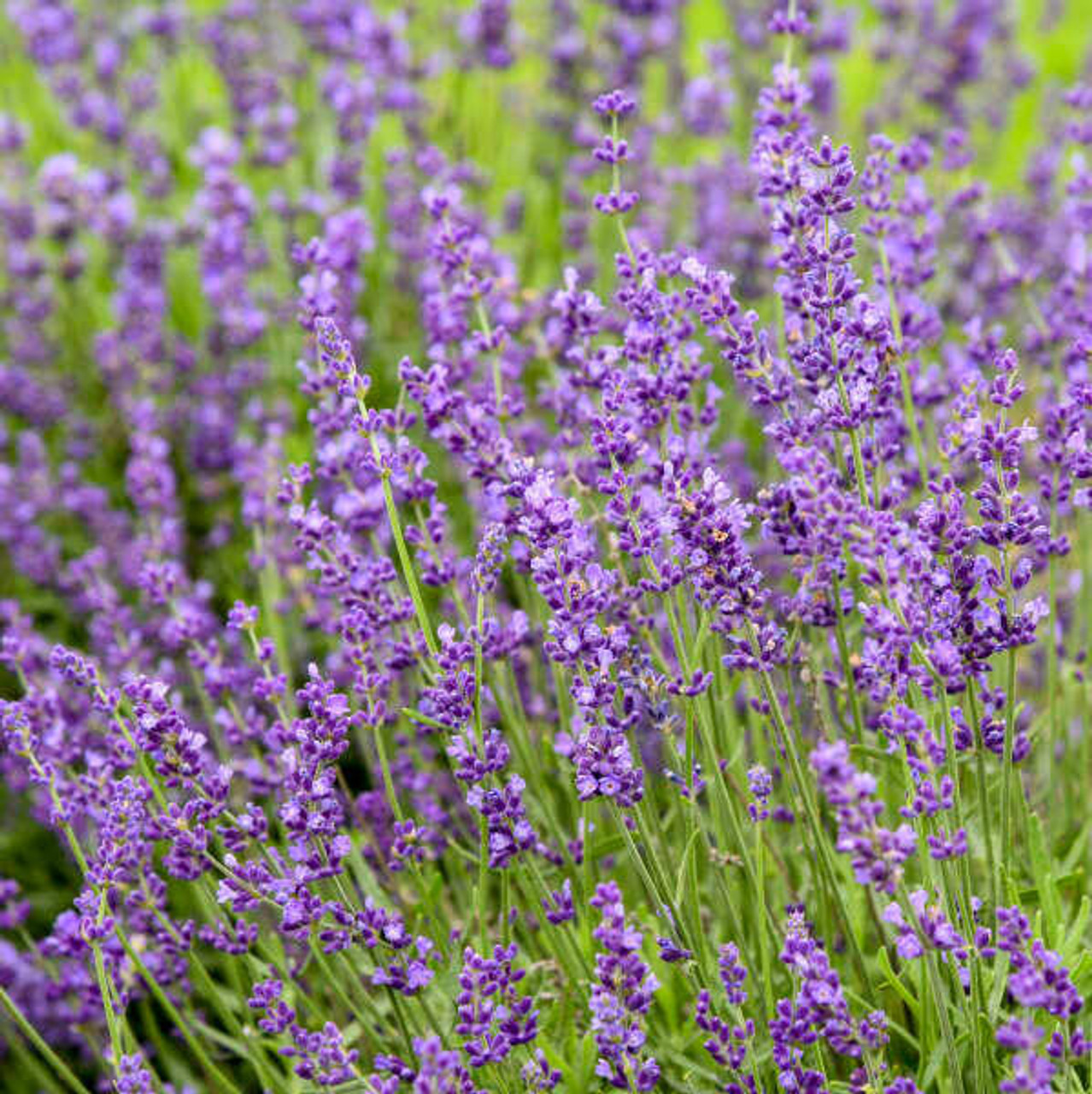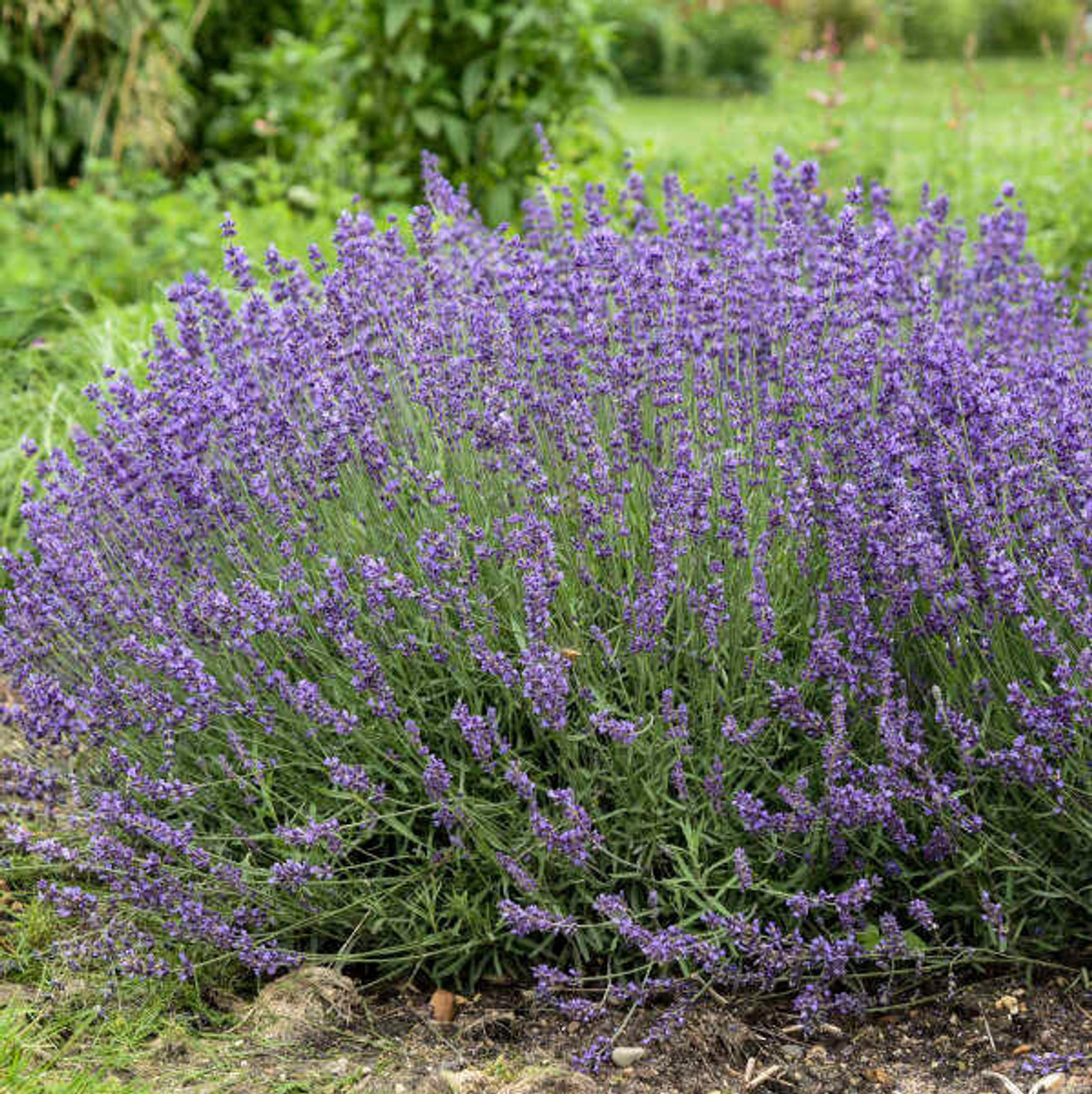Product Description
Lavandula 'Imperial Gem' (20)ct Flat
Common Name: English Lavender
A compact variety with numerous purple flowers in summer. Proportionate flower stems keep the plant from looking leggy or flopping under the weight of its blooms. The habit is well-rounded and tidy; made of silvery green leaves. A must have addition for growers looking to upgrade their Lavender lineup! Top rated performer by the Chicago Botanic Garden.
The grey-green foliage forms a compact mound topped with plump, rich violet purple flower wands that are perfect for cutting for fresh and dried bouquets. Clusters of tiny flowers appear at the nodes up the stem in addition to the terminal inflorescence, adding color down into the plant.
Lavender must be grown in full sun to be able to produce flowers, so do not hesitate to plant them in those hot, dry areas where nothing else seems to grow. They will actually grow better in poor, gravelly soil than in rich humus; don't be tempted to enrich the soil when you plant it. Sharp drainage, especially in winter, is essential for preventing crown rot. Other than that, Lavender is known to have few problems with pests and diseases. Shearing back the evergreen foliage in early spring will rejuvenate plants and stimulate new growth.
Chicago Botanic Garden Plant Evaluation Top Performer -- 2017
Height: 18.0-24.0 Inches
Spread: 18.0-24.0 Inches
Hardiness Zones: 5,6,7,8,9
Flower Color: Purple-blue shades
Foliage Color: Green shades
Full Sun
Low Water Needs
Poor Soil Quality
Bloomtime: Early Summer - Early Fall
Attracts Butterflies
Bee Friendly
Deer and Rabbit Resistant
Seasonal Interest: Dried Seed Heads
Evergreen
Growth Rate: Medium
Border Plant, Cut Flower, Cut Foliage, Dried Flower, Drought Tolerant, Fragrant Flowers, Fragrant Foliage,Attractive Foliage
Mass Planting, Small
'Imperial Gem' is a beautiful and popular cultivar of English lavender (Lavandula angustifolia). Here is a breakdown of its features and care:
Description and Details
- Appearance: 'Imperial Gem' is known for its compact, bushy growth habit and its deep violet-blue flowers that appear in abundance. The silvery-green foliage is highly aromatic, adding to its appeal.
- Size: It typically grows to about 18-24 inches tall and wide, making it a great choice for smaller gardens or container planting.
- Flowers: The flowers are borne on tall spikes and are highly fragrant, attracting bees, butterflies, and other pollinators.
- Hardiness Zones: Hardy in zones 5-9.
- Light: Prefers full sun (at least 6 hours of direct sunlight daily).
- Soil: Thrives in well-drained soil. It is drought-tolerant once established.
Native Habitat
- Like other English lavenders, 'Imperial Gem' is native to the Mediterranean region.
Landscaping Design Tips
- Borders and Edging: Its compact size makes it ideal for edging pathways or creating low hedges.
- Rock Gardens: It complements the dry, rocky conditions of a rock garden.
- Herb Gardens: A classic addition to any herb garden.
- Container Gardening: Grows well in pots, allowing you to enjoy its fragrance and beauty on patios or balconies.
- Companion Planting: Pair it with other sun-loving, drought-tolerant plants like rosemary, thyme, and echinacea.
Planting and Care
- Planting:
- Choose a sunny spot with well-drained soil.
- Plant in spring or fall.
- Space plants about 18-24 inches apart.
- Care:
- Water regularly until established, then water sparingly as needed.
- Prune lightly in spring to encourage bushier growth and more flowers.
- Deadhead spent flowers to promote continuous blooming.
- Avoid over-fertilizing, as this can reduce flower production.
Additional Information
- 'Imperial Gem' is a recipient of the prestigious Award of Garden Merit from the Royal Horticultural Society, a testament to its outstanding qualities.
- The flowers can be cut and dried, preserving their fragrance and color for potpourri or crafts.
- Lavender is deer and rabbit resistant.
Important Note: When planting lavender, ensure your soil is well-drained, which is crucial for its success.
Lavender does not tolerate wet feet.
Other Details
The most important part of the plant is its root system. Healthy roots are the foundation of a healthy, vibrant plant. The type of plug container used is based on the specific needs of the plants. Perennials offered as bare root traditionally perform better when planted as bare root.Planted in a specialized mix, potted plants have well established root systems. Top growth stage will vary depending on the current life cycle and time of year when shipped. In Winter and early Spring dormant plants may be shipped. Dormant plants may be planted right away, even before the last frost date.
Most bare root varieties are field grown for at least one season, though Hemerocallis and Hosta are grown for two seasons. The bulk of the soil is removed during the harvesting process and the tops of most varieties are trimmed back to the crown. They are graded, packed in shredded aspen or sphagnum moss and stored in freezers until ready to be shipped.
See our Container Sizes and Bare Root Perennials pages for more information.
Plant information and care is provided in the Overview section, Plant Genus Page and general information is provided in the Planting Care & Guides. Additional questions can be asked on each Plant page.
Plant Spacing: Using the maximum mature spread or width of a plant to guide spacing, ensures space to grow to full size. To fill an area sooner, plant them closer together. Just remember, future thinning or transplanting may be needed.
Water: Keep a close eye on newly planted perennials, especially throughout the first growing year. Most early plant loss is due to too much or too little water!












